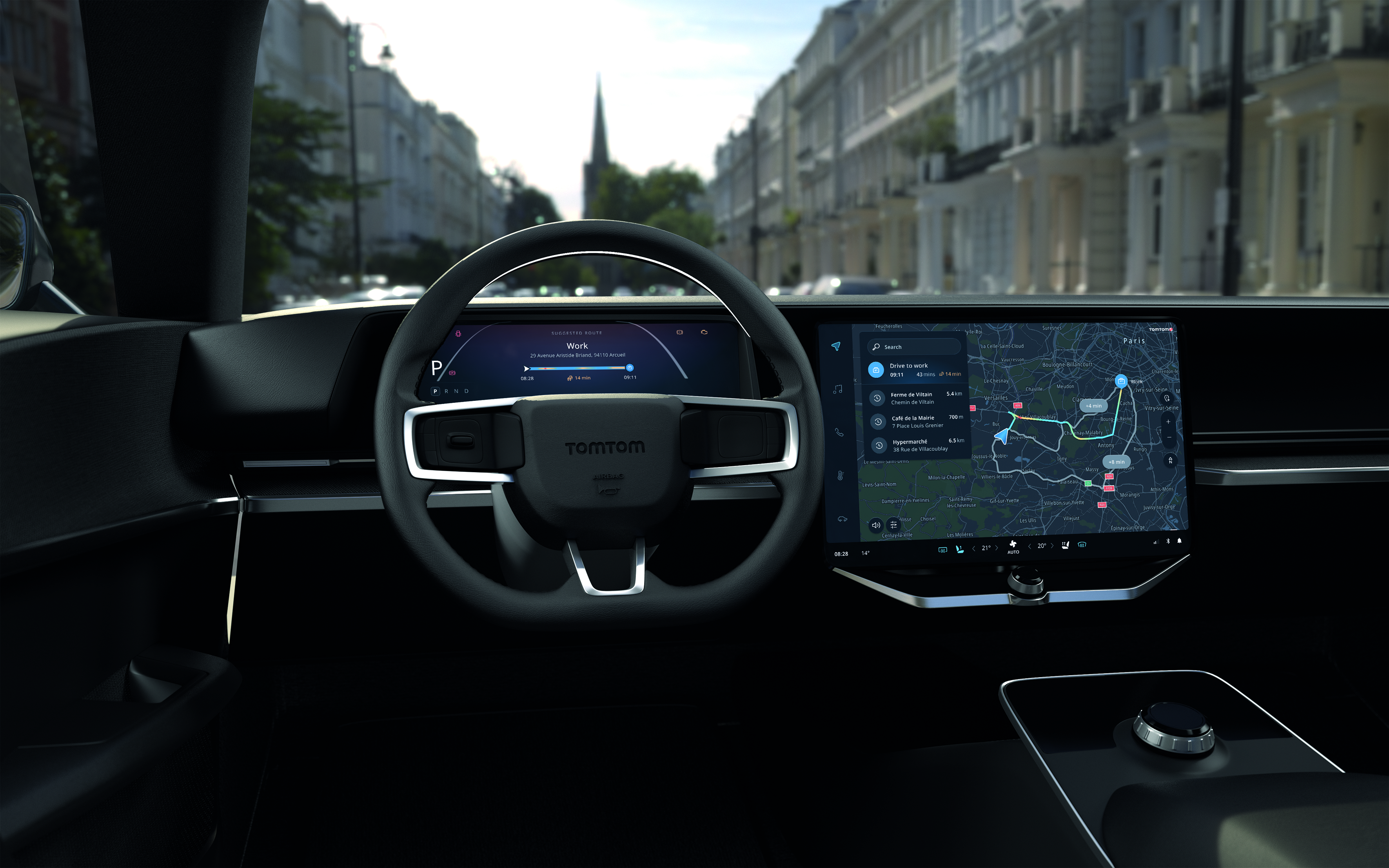
TomTom has launched a hybrid navigation solution for the automotive industry that utilises routing, search and fresh maps while still offering a fully functional offline mode.
The company says TomTom Navigation for Automotive switches to its onboard software and maps when no data connection is available, making it available under all circumstances.
Antoine Saucier, managing director at TomTom Automotive, says: “We have combined the safety and comfort of an in-dash system with the always up-to-date and super-fast experience of a smartphone app,”
The user interface can be displayed on the centre stack, cluster screen, head-up display (HUD) and passenger screens in different sizes and aspect ratios.
TomTom insists this integrated approach means information such as turn by turn and lane-level navigation instructions, as well as traffic and hazard warnings can be projected on the vehicle’s HUD or cluster screen, increasing driver safety.
The driver can also interact with TomTom’s navigation via voice assistance from Amazon Alexa, Cerence or Houndify.
TomTom’s navigation can be integrated with vehicle sensors, enabling it to display information linked to advanced driver assistance systems and refuelling or recharging needs.
Dynamic range mapping helps drivers to visualise their vehicle’s range, which according to TomTom, is especially important for electric vehicles.
The driver is alerted to find a charging location and provided with a cost comparison of the available charging points that are on route if the predicted range is insufficient to make it to the selected destination.
“We continue to strive for safer roads, easier driving and cleaner air. TomTom’s new full-stack in-dash navigation is ready today to harness the capabilities of the automated and electric vehicles of tomorrow,” Saucier adds.
The technology can be integrated into an in-vehicle infotainment system and can work with multiple vehicle types. It is offered as one pre-integrated stack and delivered through software development kits and application programming interfaces.











